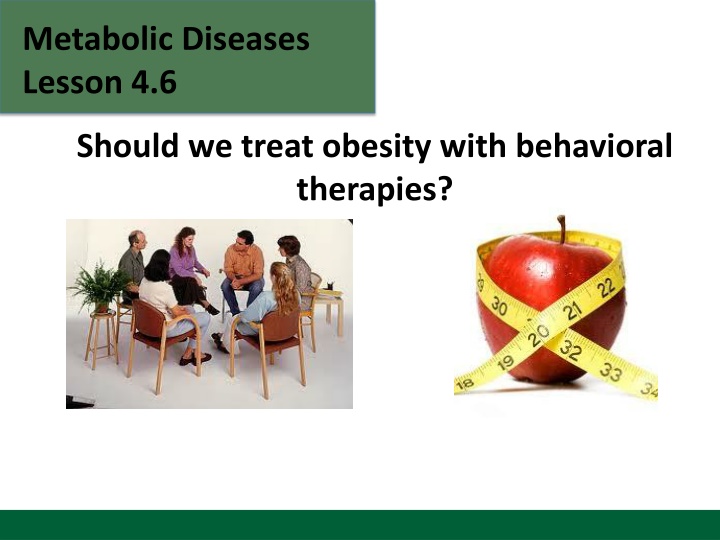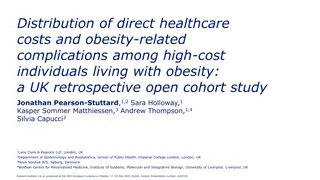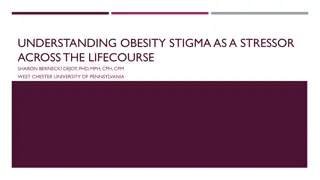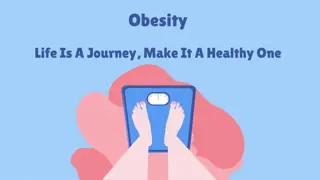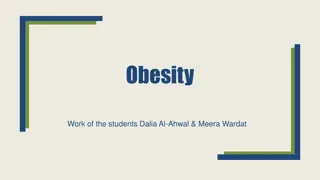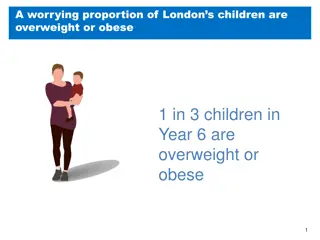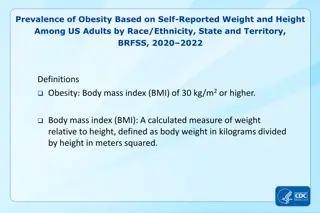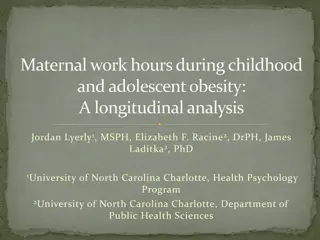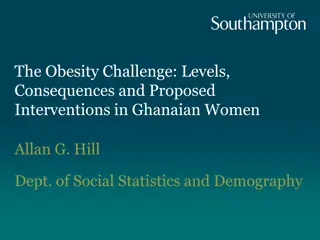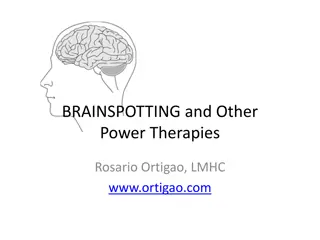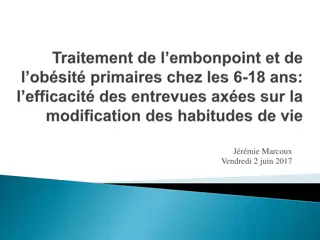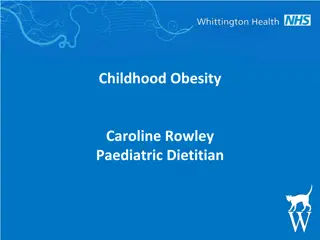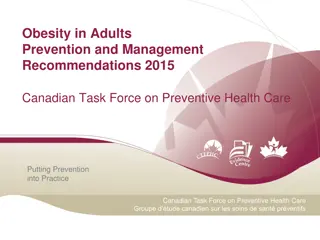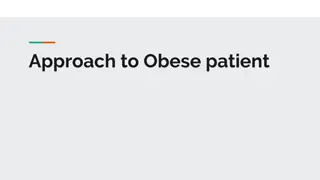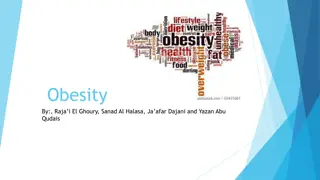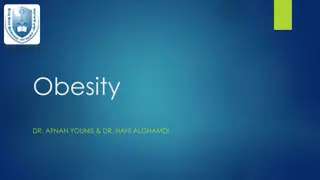Treating Obesity with Behavioral Therapies
Food addiction, similarities between drug use and food consumption, and the effectiveness of behavioral therapies for obesity treatment are explored in this detailed lesson. The study delves into research based hypotheses, methods, interventions like guided self-help and behavioral therapy, and the role of cognitive behavioral therapy in combating overeating.
Download Presentation

Please find below an Image/Link to download the presentation.
The content on the website is provided AS IS for your information and personal use only. It may not be sold, licensed, or shared on other websites without obtaining consent from the author.If you encounter any issues during the download, it is possible that the publisher has removed the file from their server.
You are allowed to download the files provided on this website for personal or commercial use, subject to the condition that they are used lawfully. All files are the property of their respective owners.
The content on the website is provided AS IS for your information and personal use only. It may not be sold, licensed, or shared on other websites without obtaining consent from the author.
E N D
Presentation Transcript
Metabolic Diseases Lesson 4.6 Should we treat obesity with behavioral therapies?
Do Now Can food become addictive? How? If food can be addictive can we use strategies for treating addiction to treat over eating?
Learning from Addiction The Reward pathway: Pleasurable stimuli (i.e. Drugs of abuse) PFC NAc Repeat Behavior VTA
Similarities between drug use and food consumption Effect on the reward pathway Existence of intense cravings Role of genetics and environmental factors Involvement of stress Development of tolerance and withdrawal Effect of overconsumption on the brain
Activity: Do behavioral treatments for obesity work?
Introduction 1. What previous research was the study based on? What did that previous research show? 2. What was the purpose of this study? 1. What were the two hypotheses that this study is based on?
Methods 4. What were the criteria for inclusion? 5. What were the criteria for exclusion? Why were these criteria selected? 6. What was the total number of participants? 7. How long did each of the treatments last? 8. With these numbers of participants, how much difference between the BT and CBT groups could they detect? 9. What was the purpose of the Institutional Review board?
How were they randomized? GSH: Guided self-help BT: Behavioral therapy CBT: Cognitive Behavioral therapy
What were the interventions? GSH (Guided self-help) Lasts 24 weeks Participants asked to restrict their calories to 1200 daily, make healthy food choices and gradually increase level of activity 2 face-to-face sessions with a therapist. 15 20-minute phone calls.
BT (Behavioral therapy) Lasts 44 weeks Participants asked to restrict their calories to 1200 daily. Participants asked to engage in 30 min. of moderate to high intensity activity. Received training in self-monitoring, goal setting, stimulus control and social support. 24 50 min. one-to-one sessions with a therapist, weekly for the first 7 weeks, then every 2 weeks.
CBT (Cognitive Behavioral therapy) Lasts 44 weeks Same as behavioral therapy, and in addition. Participants receive training on establishing realistic weight goals and expectations for weight loss, correcting faulty assumptions about appearance, valuing aspects of self unrelated to weight, and fostering acceptance of the weight and body shape achieved at the conclusion of treatment. 24 50 min. one-to-one sessions with a therapist, weekly for the first 7 weeks, then every 2 weeks.
Treatments 10.Identify three main differences between GSH and the other therapies used (BT and CBT) 11.What are the similarities between BT and CBT? 12.What is the difference between CBT and BT?
Results 13. Even though the subjects were randomly assigned to the three groups, the groups were not equivalent. What was the difference between them? Why did it matter, and what did the researchers have to do as a result? 13. At the end of the treatment there was a significant difference between the subjects in the GSH and BT groups. What was it? Was there also a difference between the GSH and CBT groups? Between the BT and CBT groups? What do these results mean? Could there be a confounding variable? 14. At the end of the study at 36 months, had any of the groups managed to maintain the weight they had lost? What does this mean with respect to the original 2 hypotheses?
Conclusions 16.The authors suggest a reason why one of their hypotheses was not supported, what was it?
What do you think? Based on what you have learned about how the brain can influence eating behaviors, would you be more inclined to agree with the authors of the study, or the authors of the commentary quoted from above? Why?
Wrap up: How can we treat obesity? Modify behaviors that are associated with overeating. Treat obese people with drugs that prevent overeating. Treat obese people surgically to limit the amount of food they can eat.
Homework Design a study for treatment of obesity based on the reward pathway.
